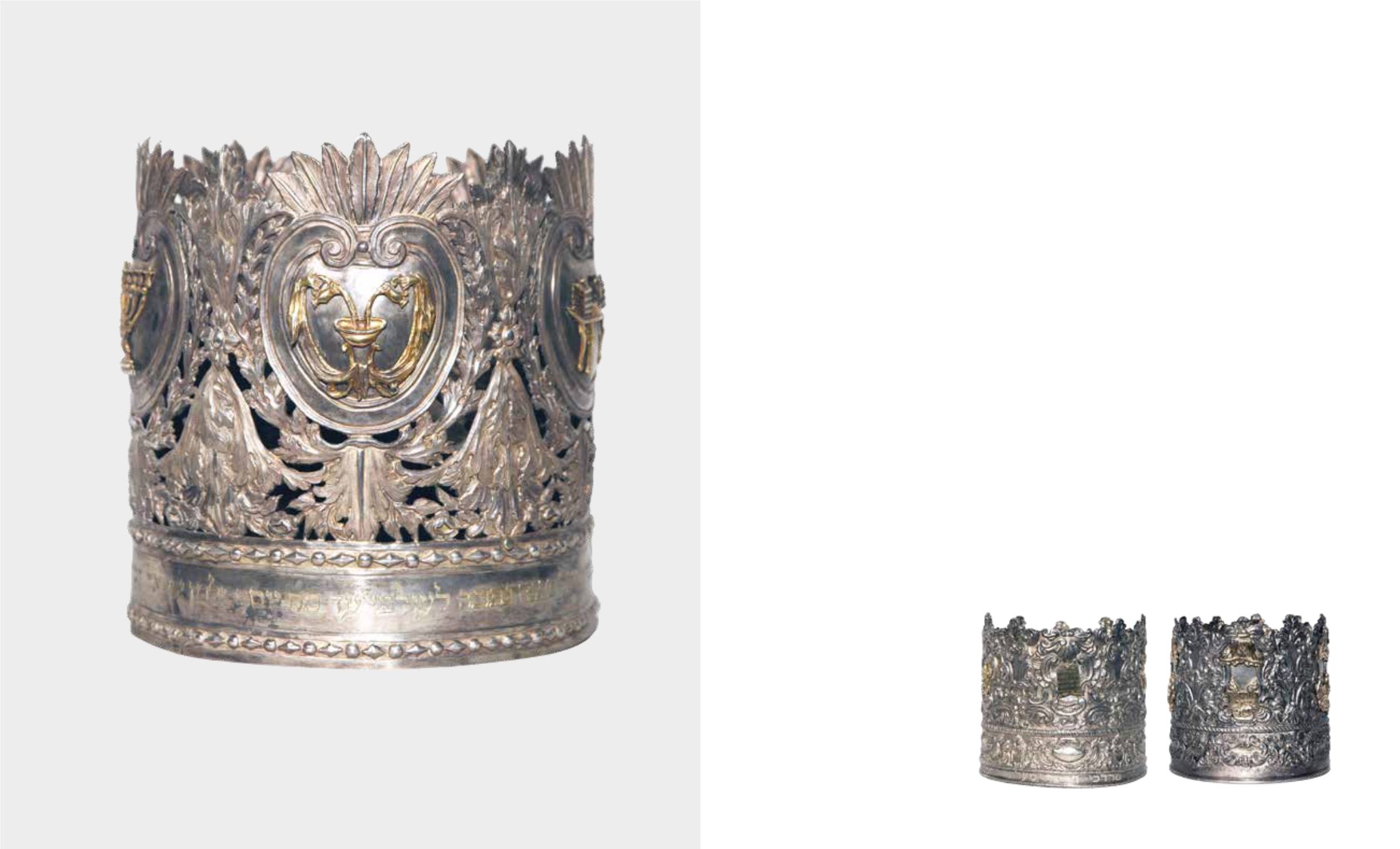
The favored material for the
ketarim
was
silver, at times inlayed with precious
stones and coral. Particularly noteworthy
are the steel crowns owned by the Jewish
community of Ferrara, perhaps made in
times of hardship, or as examples for the
silversmiths to follow.
In many cases, the crowns bore dedicatory
inscriptions with the name of the donor and
the year in which the object was offered to
the synagogue.
The date was written in letters of the
Hebrew alphabet, each letter having a
numerical value. The letters used as
numbers were indicated with small marks,
often points. After adding up the numerical
values, one adds 1240 to obtain the date
according to the Gregorian calendar.
Keter
Depending on their place of origin, Torah
crowns are called
ketarim
or
ataroth
, two
Hebrew terms meaning crown.
Standing atop the Torah scrolls, they
underscore its importance by their
presence.
Jewish tradition depicts the Torah not
only as the tree of life, but also as a bride
and daughter of the king, understood as
the God of Israel: thus it must be regally
dressed in a manner befitting a bride or
princess and, this most likely explains why
it was crowned.
The styles used in the
ataroth
reflect
the influences of the geographic area of
production: indeed, they were often similar
to the crown worn by the monarchs of the
times or that adorned statues of Our Lady.
Keter
, XVIII century, Cento,
embossed, chiseled and engraved
silver with gilt inserts,
20.5 cm diameter
Keter
, late XVIII – early XIX century,
Cento, embossed, chiseled and
engraved silver with gilt inserts,
20 cm diameter
Keter
, early XIX century, Cento,
embossed, chiseled and engraved
silver with gilt inserts, 20 cm diameter
15
14


